Shomik Jain
Reality Check: A New Evaluation Ecosystem Is Necessary to Understand AI's Real World Effects
May 24, 2025Abstract:Conventional AI evaluation approaches concentrated within the AI stack exhibit systemic limitations for exploring, navigating and resolving the human and societal factors that play out in real world deployment such as in education, finance, healthcare, and employment sectors. AI capability evaluations can capture detail about first-order effects, such as whether immediate system outputs are accurate, or contain toxic, biased or stereotypical content, but AI's second-order effects, i.e. any long-term outcomes and consequences that may result from AI use in the real world, have become a significant area of interest as the technology becomes embedded in our daily lives. These secondary effects can include shifts in user behavior, societal, cultural and economic ramifications, workforce transformations, and long-term downstream impacts that may result from a broad and growing set of risks. This position paper argues that measuring the indirect and secondary effects of AI will require expansion beyond static, single-turn approaches conducted in silico to include testing paradigms that can capture what actually materializes when people use AI technology in context. Specifically, we describe the need for data and methods that can facilitate contextual awareness and enable downstream interpretation and decision making about AI's secondary effects, and recommend requirements for a new ecosystem.
Toward Personalized Affect-Aware Socially Assistive Robot Tutors in Long-Term Interventions for Children with Autism
Jan 30, 2021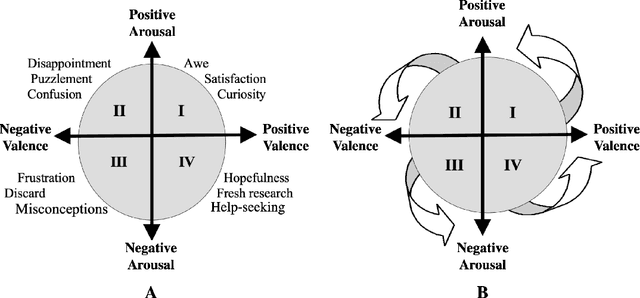
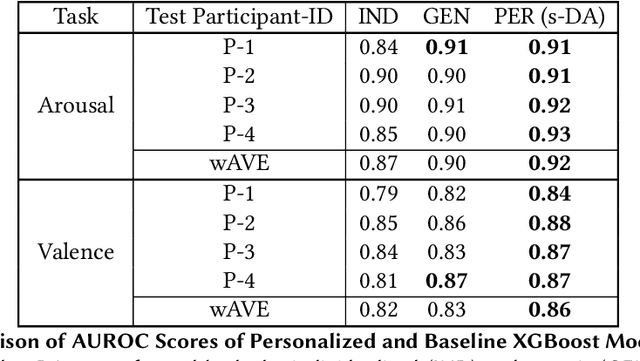
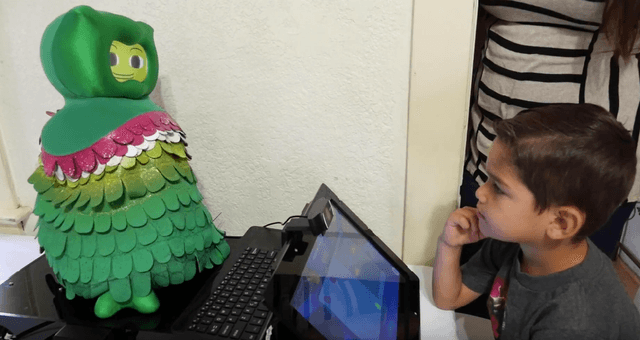

Abstract:Affect-aware socially assistive robotics (SAR) has shown great potential for augmenting interventions for children with autism spectrum disorders (ASD). However, current SAR cannot yet perceive the unique and diverse set of atypical cognitive-affective behaviors from children with ASD in an automatic and personalized fashion in long-term (multi-session) real-world interactions. To bridge this gap, this work designed and validated personalized models of arousal and valence for children with ASD using a multi-session in-home dataset of SAR interventions. By training machine learning (ML) algorithms with supervised domain adaptation (s-DA), the personalized models were able to trade off between the limited individual data and the more abundant less personal data pooled from other study participants. We evaluated the effects of personalization on a long-term multimodal dataset consisting of 4 children with ASD with a total of 19 sessions, and derived inter-rater reliability (IR) scores for binary arousal (IR = 83%) and valence (IR = 81%) labels between human annotators. Our results show that personalized Gradient Boosted Decision Trees (XGBoost) models with s-DA outperformed two non-personalized individualized and generic model baselines not only on the weighted average of all sessions, but also statistically (p < .05) across individual sessions. This work paves the way for the development of personalized autonomous SAR systems tailored toward individuals with atypical cognitive-affective and socio-emotional needs.
Nowcasting Gentrification Using Airbnb Data
Jan 18, 2021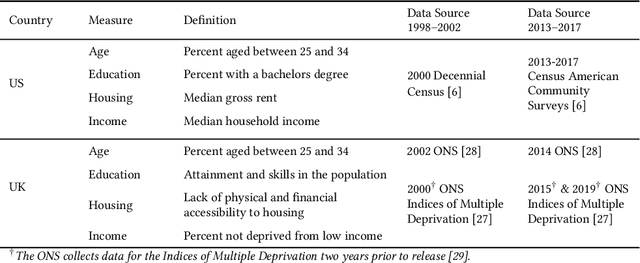

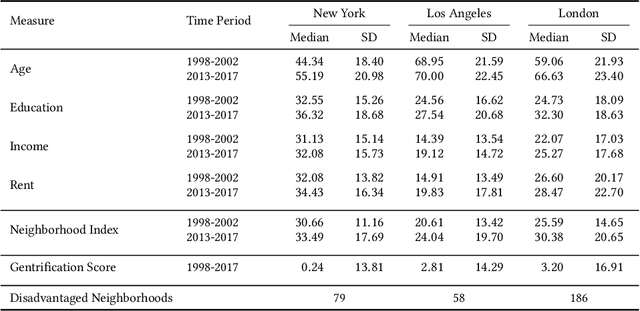
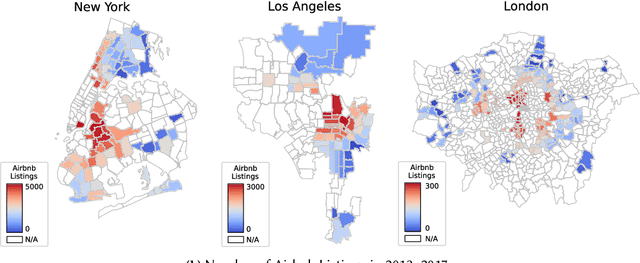
Abstract:There is a rumbling debate over the impact of gentrification: presumed gentrifiers have been the target of protests and attacks in some cities, while they have been welcome as generators of new jobs and taxes in others. Census data fails to measure neighborhood change in real-time since it is usually updated every ten years. This work shows that Airbnb data can be used to quantify and track neighborhood changes. Specifically, we consider both structured data (e.g. number of listings, number of reviews, listing information) and unstructured data (e.g. user-generated reviews processed with natural language processing and machine learning algorithms) for three major cities, New York City (US), Los Angeles (US), and Greater London (UK). We find that Airbnb data (especially its unstructured part) appears to nowcast neighborhood gentrification, measured as changes in housing affordability and demographics. Overall, our results suggest that user-generated data from online platforms can be used to create socioeconomic indices to complement traditional measures that are less granular, not in real-time, and more costly to obtain.
Adversarial Perturbations Fool Deepfake Detectors
Mar 24, 2020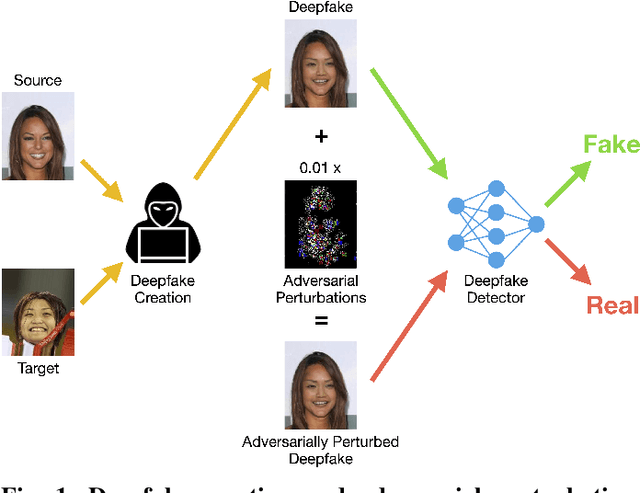

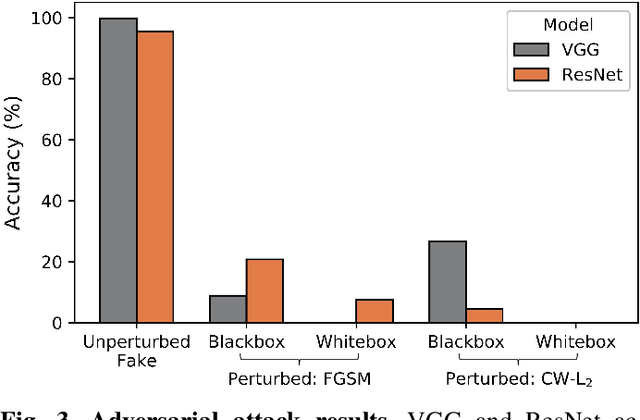
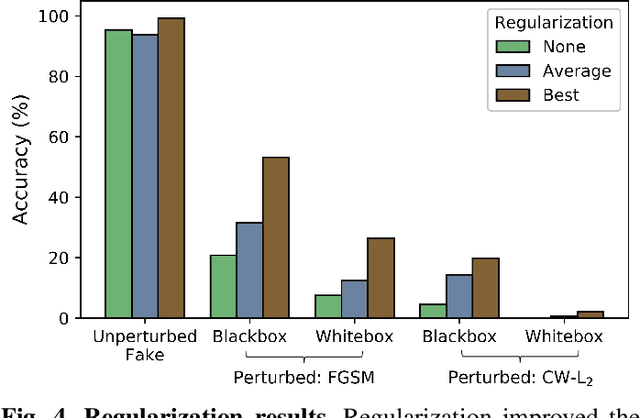
Abstract:This work uses adversarial perturbations to enhance deepfake images and fool common deepfake detectors. We created adversarial perturbations using the Fast Gradient Sign Method and the Carlini and Wagner L2 norm attack in both blackbox and whitebox settings. Detectors achieved over 95% accuracy on unperturbed deepfakes, but less than 27% accuracy on perturbed deepfakes. We also explore two improvements to deepfake detectors: (i) Lipschitz regularization, and (ii) Deep Image Prior (DIP). Lipschitz regularization constrains the gradient of the detector with respect to the input in order to increase robustness to input perturbations. The DIP defense removes perturbations using generative convolutional neural networks in an unsupervised manner. Regularization improved the detection of perturbed deepfakes on average, including a 10% accuracy boost in the blackbox case. The DIP defense achieved 95% accuracy on perturbed deepfakes that fooled the original detector, while retaining 98% accuracy in other cases on a 100 image subsample.
Modeling Engagement in Long-Term, In-Home Socially Assistive Robot Interventions for Children with Autism Spectrum Disorders
Feb 06, 2020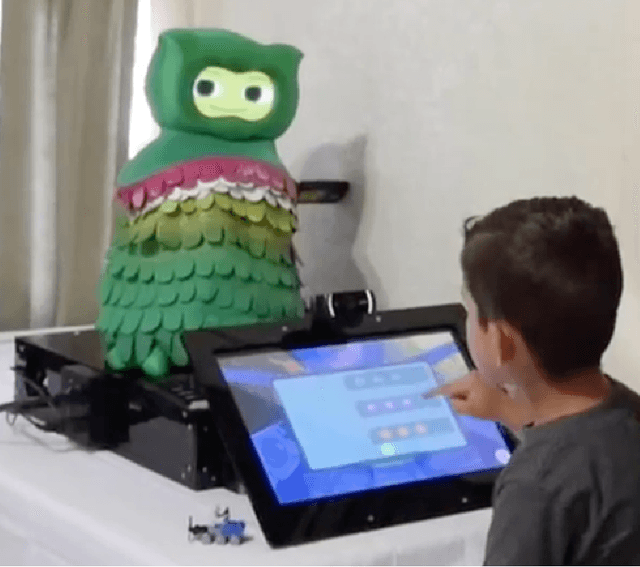

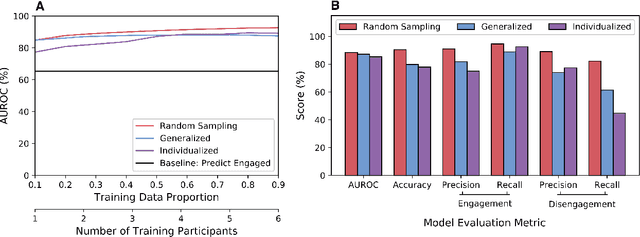
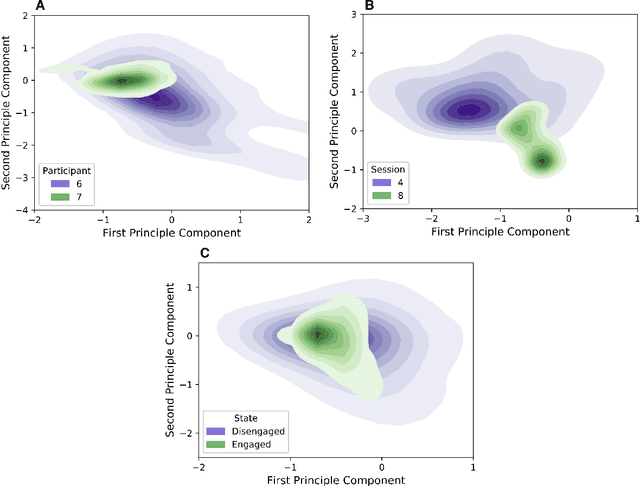
Abstract:Socially assistive robotics (SAR) has great potential to provide accessible, affordable, and personalized therapeutic interventions for children with autism spectrum disorders (ASD). However, human-robot interaction (HRI) methods are still limited in their ability to autonomously recognize and respond to behavioral cues, especially in atypical users and everyday settings. This work applies supervised machine learning algorithms to model user engagement in the context of long-term, in-home SAR interventions for children with ASD. Specifically, two types of engagement models are presented for each user: 1) generalized models trained on data from different users; and 2) individualized models trained on an early subset of the user's data. The models achieved approximately 90% accuracy (AUROC) for post hoc binary classification of engagement, despite the high variance in data observed across users, sessions, and engagement states. Moreover, temporal patterns in model predictions could be used to reliably initiate re-engagement actions at appropriate times. These results validate the feasibility and challenges of recognition and response to user disengagement in long-term, real-world HRI settings. The contributions of this work also inform the design of engaging and personalized HRI, especially for the ASD community.
Long-Term Personalization of an In-Home Socially Assistive Robot for Children With Autism Spectrum Disorders
Nov 18, 2019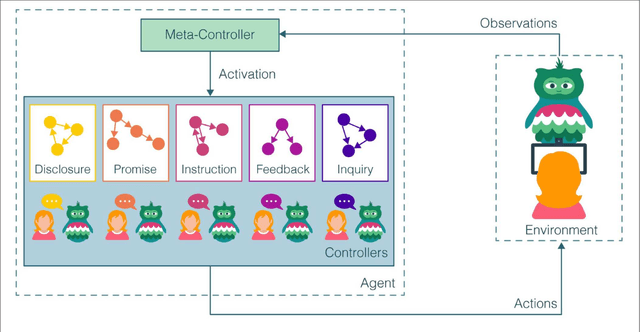
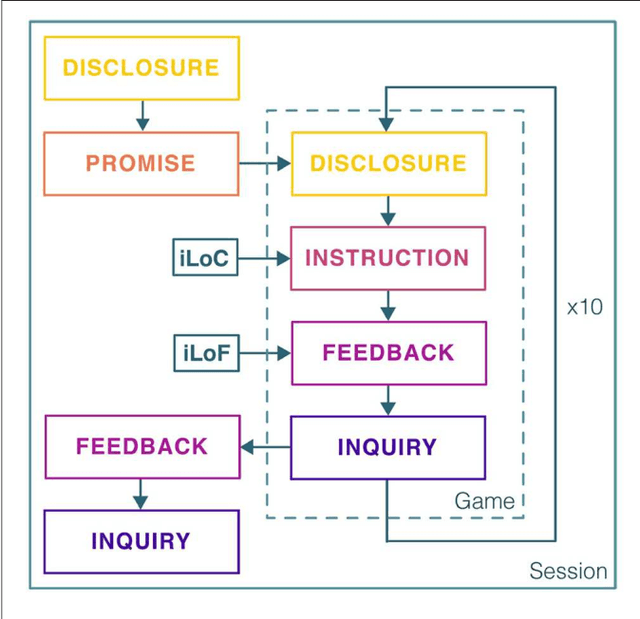
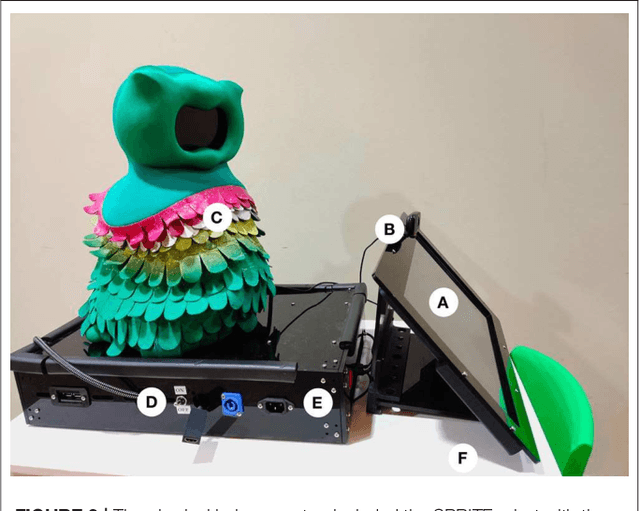
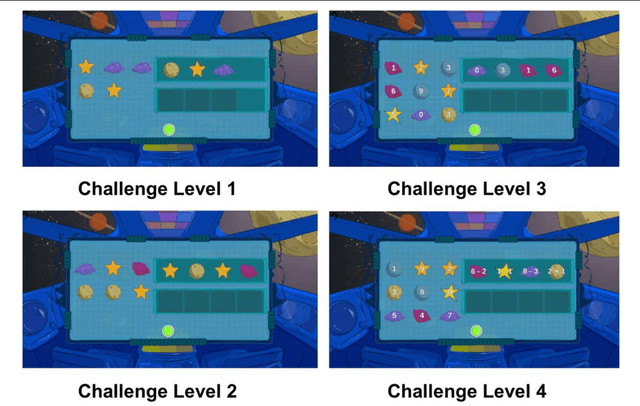
Abstract:Socially assistive robots (SAR) have shown great potential to augment the social and educational development of children with autism spectrum disorders (ASD). As SAR continues to substantiate itself as an effective enhancement to human intervention, researchers have sought to study its longitudinal impacts in real-world environments, including the home. Computational personalization stands out as a central computational challenge as it is necessary to enable SAR systems to adapt to each child's unique and changing needs. Toward that end, we formalized personalization as a hierarchical human robot learning framework (hHRL) consisting of five controllers (disclosure, promise, instruction, feedback, and inquiry) mediated by a meta-controller that utilized reinforcement learning to personalize instruction challenge levels and robot feedback based on each user's unique learning patterns. We instantiated and evaluated the approach in a study with 17 children with ASD, aged 3 to 7 years old, over month-long interventions in their homes. Our findings demonstrate that the fully autonomous SAR system was able to personalize its instruction and feedback over time to each child's proficiency. As a result, every child participant showed improvements in targeted skills and long-term retention of intervention content. Moreover, all child users were engaged for a majority of the intervention, and their families reported the SAR system to be useful and adaptable. In summary, our results show that autonomous, personalized SAR interventions are both feasible and effective in providing long-term in-home developmental support for children with diverse learning needs.
* 30 pages, 10 figures, Frontiers in Robotics and AI journal
 Add to Chrome
Add to Chrome Add to Firefox
Add to Firefox Add to Edge
Add to Edge